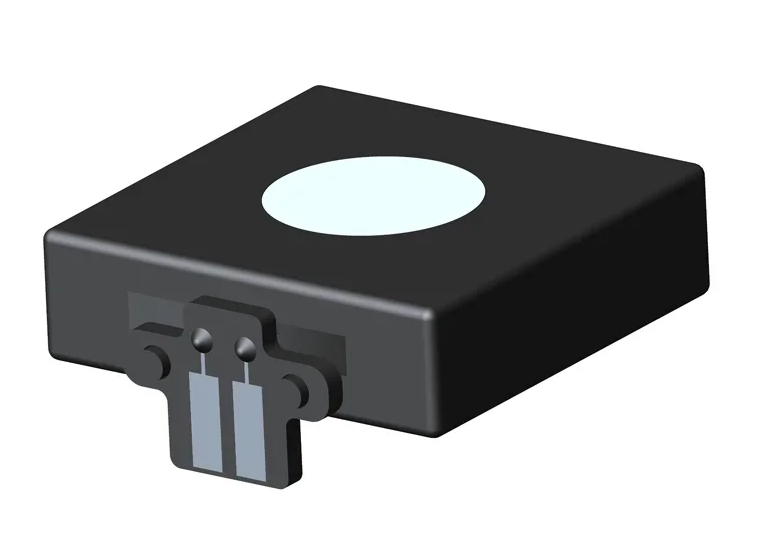- This topic is empty.
-
AuthorPosts
-
2025-11-10 at 11:35 am #5387
Volatile Organic Compounds (VOCs) are key indicators of air quality and industrial safety. Accurate VOC detection is essential for environmental monitoring, smart buildings, industrial processes, and hazardous gas management. To achieve this, high-performance VOC sensors are necessary. ProSense, a leading gas sensing solution provider, produces one of the most extensive lines of gas sensors globally, covering CO, H2, HCHO, H2S, NH3, CH4, and more. Since its establishment, ProSense has delivered over 10 million gas sensors worldwide, renowned for their high stability, anti-interference characteristics, and suitability for demanding environments.
Proper maintenance of VOC sensors ensures long-term accuracy, reliability, and durability. This guide provides practical, actionable tips for maintaining your ProSense VOC sensors, troubleshooting common issues, and optimizing sensor performance in various applications.
1. Regular Cleaning and Inspection
Why Cleaning Matters
VOC sensors can accumulate dust, chemical residues, or moisture, which may interfere with sensor responsiveness and accuracy. Even ProSense high-stability sensors benefit from regular cleaning.
Recommended Cleaning Practices
-
Use a soft, lint-free cloth or compressed air to remove surface contaminants.
-
Avoid harsh solvents that can damage sensitive sensing components.
-
Inspect sensor ports and vents for blockages before each use.
-
Check for any visible signs of corrosion or damage.
Frequency of Cleaning
-
High-dust or chemical-heavy environments: weekly cleaning
-
Standard industrial or indoor use: monthly inspection
-
Critical monitoring locations: integrate scheduled maintenance logs

2. Proper Calibration for Long-Term Accuracy
Importance of Calibration
Over time, VOC sensors may experience slight drift due to exposure to environmental factors. Proper calibration ensures reliable and precise readings.
ProSense Calibration Tips
-
Perform both zero-point and span calibration as recommended by ProSense.
-
Use certified calibration gases specific to target VOCs.
-
Maintain consistent environmental conditions during calibration for best results.
-
Document calibration results for future reference and quality control.
3. Minimizing Environmental Interference
Common Environmental Challenges
-
High humidity levels can affect sensor performance.
-
Extreme temperature fluctuations may cause drift.
-
Cross-sensitivity to other gases can lead to inaccurate readings.
Best Practices
-
Install sensors away from direct heat sources, sunlight, or moisture-prone areas.
-
Use protective enclosures for harsh industrial conditions.
-
Ensure proper ventilation around sensors to prevent gas accumulation.
-
Leverage ProSense’s anti-interference sensor design to mitigate environmental effects.
4. Monitoring Sensor Performance
Detecting Drift and Anomalies
Even with high-stability sensors, monitoring is crucial for detecting gradual performance changes:
-
Compare readings with baseline or reference instruments.
-
Look for abnormal fluctuations or delayed response times.
ProSense Recommendations
-
Use automated monitoring systems for continuous performance checks.
-
Schedule periodic functional tests, especially in critical industrial applications.
-
Replace sensors that exceed tolerance limits for accuracy.
5. Correct Storage and Handling
Storage Guidelines
-
Keep sensors in a clean, dry environment.
-
Maintain moderate temperatures (avoid freezing or overheating).
-
Store in original packaging until installation.
-
Avoid mechanical shocks or vibrations during storage.
Handling Tips
-
Handle with care to avoid damage to delicate sensing elements.
-
Train personnel on proper sensor handling procedures.
-
Inspect sensors for physical damage after transport or installation.
6. Firmware and Software Updates
Importance of Updates
Modern VOC sensors often include embedded software for signal processing and communication. Keeping sensors updated ensures optimal functionality and access to new features.
Best Practices
-
Regularly check ProSense’s support portal for firmware releases.
-
Follow update instructions carefully to avoid data loss.
-
Integrate updates into maintenance schedules for maximum uptime.
7. Troubleshooting Common VOC Sensor Issues
Slow Response Times
-
Cause: clogged vents, insufficient airflow, or sensor drift
-
Solution: clean sensor, verify calibration, check installation environment
Erratic Readings
-
Cause: environmental interference or cross-sensitivity
-
Solution: adjust sensor placement, use protective enclosures, recalibrate
Sensor Offline or Communication Errors
-
Cause: wiring issues, software incompatibility
-
Solution: verify connections, update software, consult ProSense support
8. Technical Parameters of ProSense VOC Sensors
Feature
Specification
Benefit
Detection Range
ppb to ppm
Suitable for industrial, environmental, and indoor monitoring
Stability
±2% full-scale
Long-term reliable readings
Anti-Interference
Built-in filtering
Reduces cross-sensitivity to other gases
Response Time
<10 sec
Rapid detection of VOC concentration changes
Operating Temp
-20°C to 60°C
Adaptable to harsh industrial environments
Power Supply
5–24V DC
Flexible integration in multiple systems
Output
Analog, Digital, or I2C
Compatible with automation and IoT systems
9. Real-World Applications of ProSense VOC Sensors
Industrial Safety Monitoring
-
Detect VOC leaks in chemical plants and refineries
-
Ensure employee safety and regulatory compliance
Smart Building Air Quality Control
-
Integrate VOC sensors into HVAC systems
-
Improve indoor air quality in offices, hospitals, and schools
Environmental Monitoring
-
Measure VOC levels near industrial sites or urban areas
-
Provide data for regulatory reporting and pollution control
10. FAQ – VOC Sensor Maintenance
Q1: How often should ProSense VOC sensors be calibrated?
A: Calibration depends on the application; typically every 6–12 months, or sooner in critical environments.Q2: Can VOC sensors operate in high-humidity environments?
A: Yes, ProSense sensors feature anti-interference technology but may require protective enclosures for extreme conditions.Q3: What causes VOC sensor drift?
A: Environmental factors, chemical exposure, or aging of the sensing elements. Regular calibration mitigates drift.Q4: How can I extend the lifespan of a VOC sensor?
A: Follow cleaning, calibration, proper storage, and regular monitoring guidelines. Avoid physical shocks and exposure to unrelated chemicals.
Conclusion
Proper maintenance of ProSense VOC sensors is critical for long-term accuracy, reliability, and safety across industrial, commercial, and environmental applications. Key strategies include:
1. Regular cleaning and inspection
2. Accurate calibration
3. Minimizing environmental interference
4. Monitoring sensor performance
5. Correct storage and handling
6. Keeping firmware and software updated
7. Following structured troubleshooting procedures
By implementing these tips, users can maximize the performance of ProSense VOC sensors, ensuring high stability, anti-interference operation, and consistent VOC detection, making them ideal for any demanding environment.
http://www.cnprosense.com
Shenzhen ProSense Technology Co., Ltd. -
-
AuthorPosts
- You must be logged in to reply to this topic.

